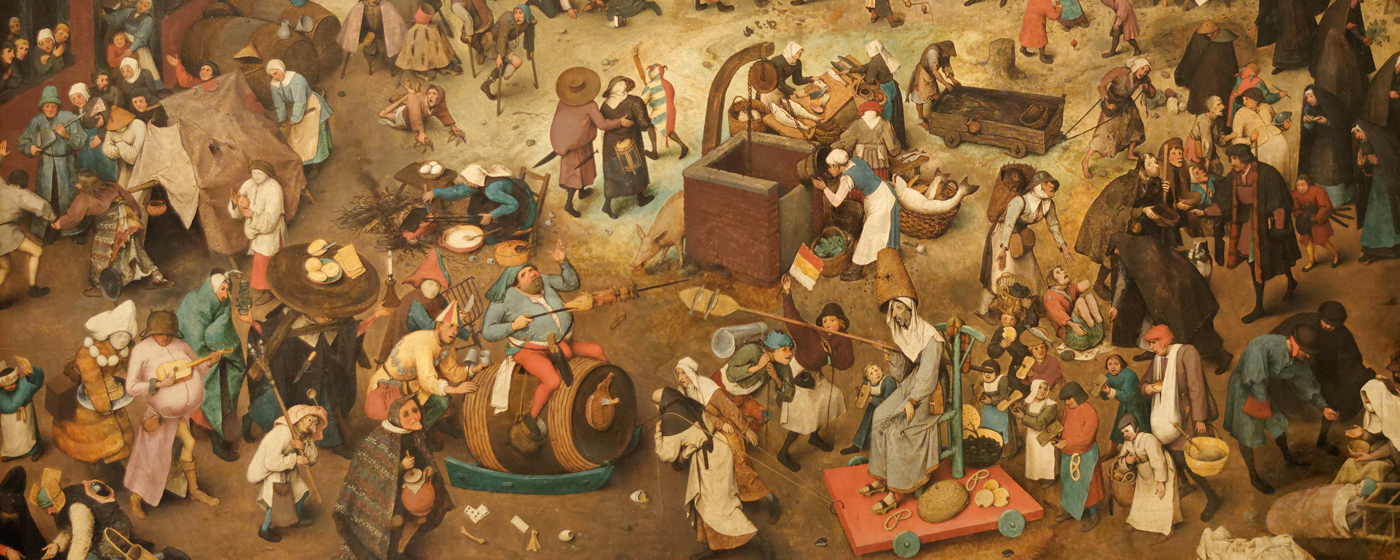Lent
For a long time, Lent was a particularly strict period of the year, involving sexual abstinence, renunciation of meat and sometimes also of eggs and dairy products. It was a time for prayer and repentance. The practice of Lent is less significant today, but the idea of fasting has remained, both for religious reasons and from a secular perspective.
Lenten obligations
Lent (from the Latin word jejenus meaning famished, thin and dry) is the strictest period of fasting imposed by the Church. It lasts forty days, from Ash Wednesday (the day after Shrove Tuesday) to Holy Week. Lent appeared in the 4th century and was inspired by the forty days of retreat and fasting which Jesus spent in the desert. For Christians, Lent was a time of prayer, repentance, purification and preparation for Easter celebrations. The restraints of Lent have varied over history. At first, only the evening meal was permitted, then a second light meal was allowed. Apart from abstaining from food, other restrictions appeared over the centuries, such as sexual abstinence, a ban on weddings and pleasurable activities, such as the closure of theatres.
Forbidden food
In the Middle Ages, Church prescriptions were stricter for the period of Lent than for the other lean days in the year. Meat and animal-based products were forbidden. This meant eggs, butter, cream, milk and cheese could not be eaten. Several regions which produced little or no oil gradually obtained the right to eat butter, to compensate for the lack of fat. In order to ease the restraints of Lent, some people asked for dispensations from the Church. However, these dispensations were often purchased and could represent a substantial source of income for the Church. The Reformation stopped such practices which were seen as a means of bartering.
As far as drinks are concerned, wine and liqueur were forbidden during the strictest periods of Lent. Non-nourishing drinks were, however, allowed, although this resulted in lively discussions as to whether a drink was considered as food or not. The question of drinking chocolate was an ongoing debate between ecclesiastics and doctors. This beverage was finally allowed at the end of the 17th century.
Fasting in the present day
Nowadays, Lent is no longer an obligation. Those who wish to mark this period may choose to give up a certain pleasure, such as sweet things, alcohol or forms of amusement. Fasting outside the religious context is practised for health and dietary reasons. ‘Detox’ therapies may replace standard daily food with fruit and vegetable juices, while some clinics offer near total fasting programmes. Sugar and fat may therefore be voluntarily eliminated from the diet.
Sugar as medicine!
Those in the West, who consider sugar as particularly desirable, may be surprised to learn that it was not forbidden by the Church during the strictest periods of Lent. The question was raised, but in the 13th century, the theologist and philosopher Saint Thomas Aquinas decided that sugar aids digestion and it was therefore allowed. Sugar was sold in apothecaries and was used primarily as a medicine or a condiment.
Assouly, Olivier, 2002. Les nourritures divines. France : Actes sud
Fischler, Claude, 2201. L’homnivore. Paris : Odile Jacob
Godefroy, Aurélie, 2006. Rites et fêtes du catholicisme. France : Plon
Pujas, Sophie, 2015. Le carême. La purification par l’ascèse. Le Point Références, Le christianisme : rites et fêtes. Janvier - février 2015. pp. 60-61
Rowley, Anthony, 1994. A table ! La fête gastronomique. France : Gallimard
Wettstein, R. Harri, 1999. Le jeûne pour la vie. Saint-Maurice : Éditions Saint-Augustin










